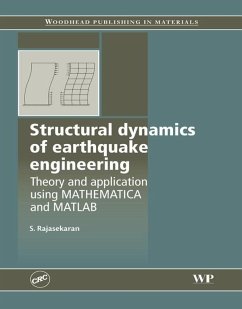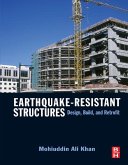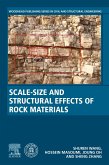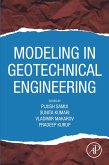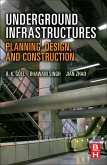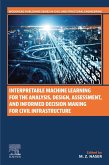Given the risk of earthquakes in many countries, knowing how structural dynamics can be applied to earthquake engineering of structures, both in theory and practice, is a vital aspect of improving the safety of buildings and structures. It can also reduce the number of deaths and injuries and the amount of property damage.
The book begins by discussing free vibration of single-degree-of-freedom (SDOF) systems, both damped and undamped, and forced vibration (harmonic force) of SDOF systems. Response to periodic dynamic loadings and impulse loads are also discussed, as are two degrees of freedom linear system response methods and free vibration of multiple degrees of freedom. Further chapters cover time history response by natural mode superposition, numerical solution methods for natural frequencies and mode shapes and differential quadrature, transformation and Finite Element methods for vibration problems. Other topics such as earthquake ground motion, response spectra and earthquake analysis of linear systems are discussed.
Structural dynamics of earthquake engineering: theory and application using Mathematica and Matlab provides civil and structural engineers and students with an understanding of the dynamic response of structures to earthquakes and the common analysis techniques employed to evaluate these responses. Worked examples in Mathematica and Matlab are given.
The book begins by discussing free vibration of single-degree-of-freedom (SDOF) systems, both damped and undamped, and forced vibration (harmonic force) of SDOF systems. Response to periodic dynamic loadings and impulse loads are also discussed, as are two degrees of freedom linear system response methods and free vibration of multiple degrees of freedom. Further chapters cover time history response by natural mode superposition, numerical solution methods for natural frequencies and mode shapes and differential quadrature, transformation and Finite Element methods for vibration problems. Other topics such as earthquake ground motion, response spectra and earthquake analysis of linear systems are discussed.
Structural dynamics of earthquake engineering: theory and application using Mathematica and Matlab provides civil and structural engineers and students with an understanding of the dynamic response of structures to earthquakes and the common analysis techniques employed to evaluate these responses. Worked examples in Mathematica and Matlab are given.
- Explains the dynamic response of structures to earthquakes including periodic dynamic loadings and impulse loads
- Examines common analysis techniques such as natural mode superposition, the finite element method and numerical solutions
- Investigates this important topic in terms of both theory and practise with the inclusion of practical exercise and diagrams
Dieser Download kann aus rechtlichen Gründen nur mit Rechnungsadresse in A, B, BG, CY, CZ, D, DK, EW, E, FIN, F, GR, HR, H, IRL, I, LT, L, LR, M, NL, PL, P, R, S, SLO, SK ausgeliefert werden.

